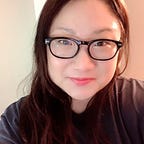Not Crazy. Not Rich. And Definitely Not Asian.
“I mean, how many twinkies do you know who can relate to Crazy Rich Asians?” is what my best friend from Beijing snidely asked me in a somewhat condescending tone.
I had been thinking the same thing when I first heard that Warner Brothers was launching a movie based on Kevin Kwan’s campy book of the same name, “Crazy Rich Asians”.
But what I found to be even more curious was the obvious disconnect between how mainstream America was billing this film as “Asian-American” when it resolutely, was not. Much like its oft-compared predecessor, “The Joy Luck Club”, most of the movie takes place in Asia and not on Western shores. Or in other words, this movie was clearly and unmistakably Asian, but not Asian-American.
My initial reaction to the book was that the plot was somewhat elitist. Maybe not intentionally so but the author capitalizes on the background of the protagonist as the stereotypically “successful” Asian-American. Rachel Chu is a Stanford graduate and Northwestern-educated professor of economics at NYU which seems to suggest that only Asian-Americans of a certain caliber can interact with crazy rich Asians. I felt like this detail detracted from or even discounted your average Asian-American experience where not all Asian-Americans attend or work at elite private schools and therefore come into regular contact with rich Asians living in America.
The Intercontinental Divide
The reason why my Beijing friend and I snickered at each other was not because we couldn’t identify with the movie but precisely because we could.
Under what circumstances would regular 2nd generation Asian-Americans meet crazy rich and presumably international Asians?
Rare circumstances, that’s what.
Unless Asian-Americans attend fancy private schools themselves or live in cities with a large demographic of foreign nationals, your average Asian-American will be hard-pressed to encounter a crazy rich Asian.
For one, it helped that my friend attended a private, top-tier university which afforded her with plenty of opportunities to consort with Ultra Rich Asians. Secondly, it was essential that she was somewhat bilingual. This distinction in particular, was very important among us Asian-Americans. We weren’t “twinkies” per se since our language abilities and by extension, cultural fluency, distinguished us from the rest of the uber-American or “very Americanized” Asian-Americans.
This was kind of the first issue I had with “Crazy Rich Asians”. Kevin Kwan misses an all-important detail which is the prerequisite of bilingualism. Without it, it would be very difficult to assimilate into the world of crazy rich Asians.
The second more ominous detail is that guess what? International Asians usually only congregate with other international Asians just like how Asian-Americans will only seek or hang out with other Asian-Americans. Take for instance the entertaining YouTube series “Ultra Rich Asian Girls” where none of the women featured on the show are Asian-American. Or more familiar to the Asian-American YouTube audience are the wunderkinds Fung Bros. who release videos that demystify Asian or Asian-American stereotypes. A side-by-side comparison of the two shows very much elucidates that the distinctions are not merely socioeconomic but also political and cultural.
Put another way, there is an inverted law of segregation at work here where Asian-ness can be just as divisive as it is unifying.
Not Crazy, Not Rich
It’s not completely fair to say that Kevin Kwan doesn’t make the obvious point that Asian-Americans are indeed different from Asians living abroad. In the movie, the female protagonist Rachel Chu is from a middle-class family living in New York. In the book, Rachel’s mother, Kerry Chu, is a real estate agent living in Cupertino, California. In both cases, Rachel’s mom is portrayed as your classic Asian immigrant who works hard to support her family. To a large extent, Rachel’s family and background are emblematic of the successful Asian-American experience.
But it is precisely this middle-class background that puts Rachel’s family at odds with that of Nicholas Young’s. Nicholas Young is born with the proverbial silver spoon and the socioeconomic difference between them is only evidence to suggest that Nicholas is decisively not Asian-American. He is an Asian-International.
Therefore, it is the dissonance between these characters, one middle-class and classically “American” and the other, epically wealthy and more globally “Asian”, that lets the movie become the modern Cinderella story told in typical Hollywood fashion.
It’s not a common scenario for sure but just level enough to make for an interesting story.
And Definitely Not Asian
Kevin Kwan doesn’t so much tell a convincing story on Asian-Americanism as much as he relates a tale on globalization that reflects a more modern consciousness taking a hold of Asia.
I believe this is where Hollywood messed up in its messaging. Mainstream media has tagged this film as a watershed moment for Asian-Americans in cinema but the real thesis of the book is that Asia has become an economic powerhouse and the wealthy scions of these industries are living in America set apart from Asian-Americans.
The most disturbing aspect of the movie however is that the Asian-American experience is only explored as an artifact of Asia’s rise to economic preeminence.
In my social circle, I know many Rachel Chus and Nicholas Youngs and only occasionally have I witnessed them meeting, dating, and ultimately, getting married.
Because in most cases, Rachel Chu will never date Nicholas Young if not for the language gap, then for the sociocultural disparities.
Now that is an exclusively Asian-American story and one that many Asian-Americans can relate to.
